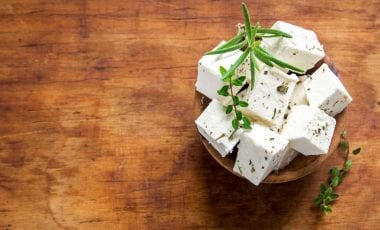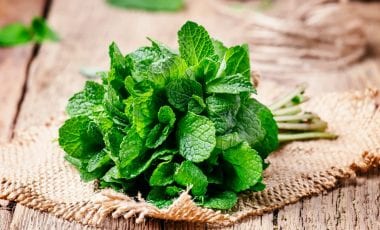Curd cheese or yoghurt? You can learn all about this beloved Icelandic food here.

The Icelandic dairy product skyr has been a familiar sight on Irish supermarket shelves for quite some time now. But what is this product exactly? Is it really as healthy as the current trend would have us believe and can it compete with classic milk products? We’ll clear things up!
What does skyr actually taste like? Those who have already tried this fashionable product would probably describe the taste as being a mixture of curd cheese and yoghurt. The consistency is reminiscent of Greek yoghurt. However, to be precise, it is a low-fat cream cheese product, and is often designated as such by producers. But where exactly does this dairy product come from, which is now available in all manner of varieties in the refrigerated section of our supermarkets?
From Icelandic tradition to trendy Irish product
According to legend, the Vikings brought skyr to Iceland more than 1,000 years ago and shared their knowledge with the local inhabitants. The product was originally created to make milk last longer for the winter. At the beginning, sheep’s milk was preferred, in contrast to the dairy milk normally used today. During the production process, live bacterial cultures are added to the skim milk and thickened with rennet, like curd cheese is. Icelanders traditionally eat their skyr with blueberries.
The ready-to-eat skyr that you can buy at the supermarket most likely doesn’t come from Iceland though. The small island nation in the far north cannot come close to meeting the demand for skyr with its 25,000 cows.
What’s in it and how healthy is skyr really?
Athletes and health-conscious people in particular are drawn to this new dairy product on the market. That’s because: With its 11 percent protein, its low fat content of 0.2 percent and its small number of calories (60 kcal/100 g), skyr’s excellent nutritional values really stand out. Thanks to its high protein content, the Icelandic dairy product keeps you feeling full for a long time and is beneficial for muscle growth. The calcium content of 150 mg per 100 g is also noticeably high and makes up 15 percent of the recommended daily intake of calcium. Calcium is the most important mineral for building bones and is therefore especially important for children and those with an increased risk of osteoporosis.

Spoilt for choice: Yoghurt, curd cheese or skyr?
When you compare the three products with each other, they all have their advantages and disadvantages. Low-fat yoghurt does indeed have less calories, but it can’t compete with the protein wonder that is skyr, since it only has between four and ten percent protein. This is because skyr requires four times as much milk to produce. The calcium content of both products is about the same though.
If we now compare skyr and low-fat curd cheese, we can see that low-fat curd cheese even beats skyr in terms of protein content at 14 g per 100 g. The low-fat content of curd cheese can also keep up with Icelandic skyr. Only the calorie and calcium values differ. With 65 kcal per 100 g, the calorie content of curd cheese is slightly higher and the calcium content at 40 mg per 100 g in contrast is significantly lower than for skyr.
However, the new trend product is noticeably more expensive than our classic curd cheese. At the moment, the price difference is about 40 percent. That’s why it makes sense to consider whether you really need to buy skyr instead. But if you are looking for a change from classic dairy products, then the Icelandic alternative is perfect for this and is definitely worth trying out. In terms of the minimal differences in nutritional values and the large price difference, it’s still totally fine to choose the tried and true low-fat curd cheese instead.
Is skyr an alternative to dairy products containing lactose?
Yes and no, as at three to four percent, skyr contains just as much lactose as yoghurt or low-fat curd cheese do. And like yoghurt and curd cheese, some people who suffer from lactose intolerance may still tolerate skyr because lactic acid bacteria are added to it. What’s more, the Icelandic dairy product is traditionally not heat-treated so that the lactic acid bacteria survive. Therefore, everyone should try it for themselves to see whether they can tolerate the Icelandic dairy product.

DIY: It’s really easy to make your own skyr!
As already mentioned, the retail price of skyr is comparatively high – so why not just make it yourself? In just a few steps, you can enjoy your own home-made product!
First of all, you need the right ingredients. A litre of skyr requires two litres of milk as the base. It’s very important to use fresh milk for this and not long-life milk. In addition to this, you will need 400 g of sour cream, half a rennet tablet and a little bit of warm water at the ready. You can buy rennet tablets at any pharmacy.
We now come to the method. First you will need to boil the fresh milk. Remember: Please don’t let the milk burn! Then this is cooled down to 40 °C. The best way of checking this is by using a thermometer, as otherwise there is the risk that curdling of the rennet tablet may not work later. Next whip the sour cream and slowly mix it into the warm milk. Then dissolve the half rennet tablet by stirring it in the warm water. Now cover the pot and let it sit for 24 hours.
The following day, line a large sieve with cheese cloth and pour the mixture through it. This helps to separate excess whey. Wait until everything has dripped off – this can take up to three hours. Poured into a well-sealed, clean container and stored in your Liebherr fridge, the finished skyr can keep for four to five days. Skyr is particularly delicious with a little honey or muesli. Would you like to eat it the traditional way? Then add blueberries like the Icelanders do. Bon appétit!

#liebherr, #skyr, #iceland, #creamcheeseproduct, #trend, #blueberries, #protein, #musclegrowth, #lowfat, #lowcalorie, #lowfatcurdcheese, #yoghurt, #calcium, #lactose, #DIY





